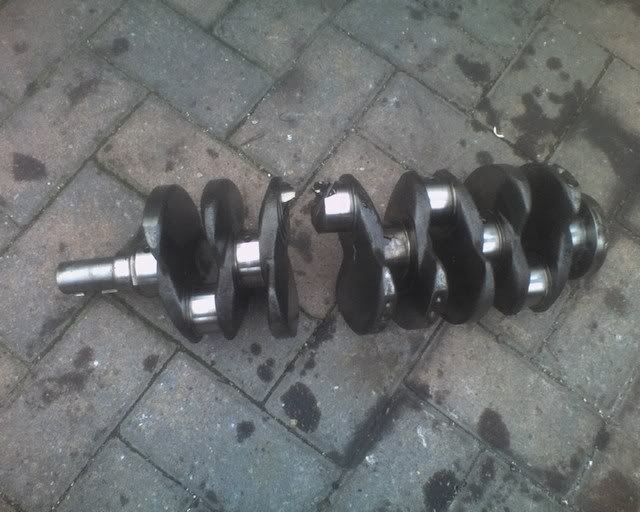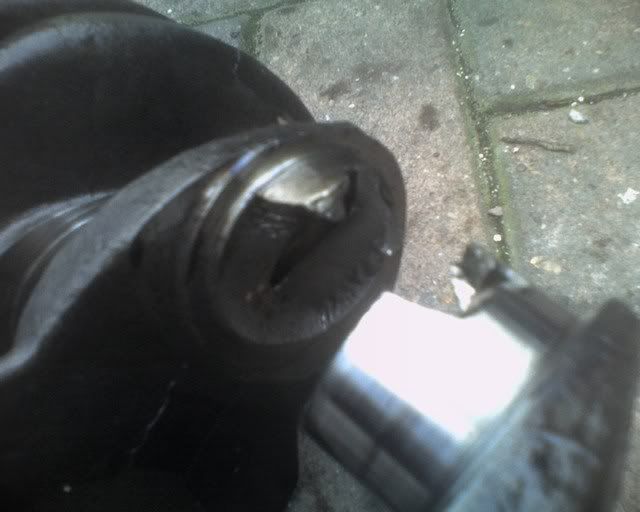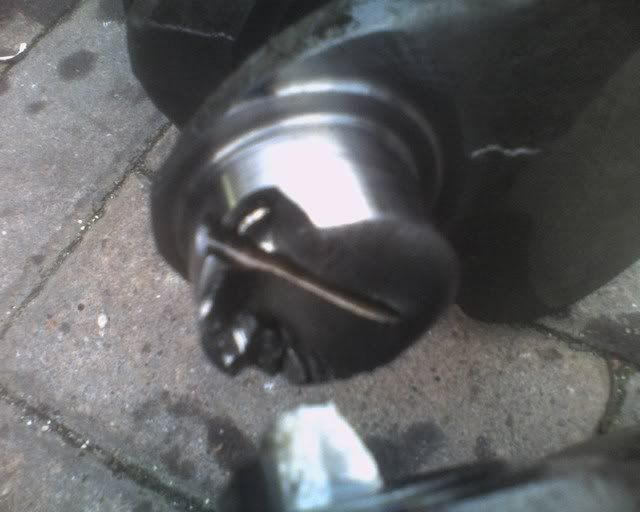
Shmed wrote:Definitely interested to know about the alloy crank pulley JJ!



Yip.

.

.

And I'm glad you've brought it up as I dont believe it to be just fatigue of the crank through high boosting and high engine speeds.



Figured the shell had been wasted


Ashman, firstly.

.

thankyou very much

!

Its my first like this

!! and secondly.

.

.

absolutely agreed, in most cases, the bearing starts to spin

lead

/ copper lead side tends to flatten initially

/ fail.

.

.

.

a spun bearing will superheat the con rod.

.

and when all the bearing has gone, will start on the crank and superheating the crank will simply crack it

!!

In this case.

.

I know the photos dont do it justice, but the journals dont have any scoring and are very smooth and despite the cracking, I still pulled the shell bearings in a recognisible state.


So instead of bearing failure which is lead to crank failure,

Crank then Bearing.


I've seen Evos, Skylines and Supra owners have similar problems, all running alloy crank pulleys.


Theres a reason why theres a dead weight in those bottom pulleys as they are used to reduce vibrations caused by combustion.

.

.

.


No point me explaining it all.

.

.

some words courtisy of Wikipedia


 The Need
The Need
Without the presence of a damper a long crankshaft will tend to act as a torsional spring

( twsting

) to some extent.

Impulses applied to the crankshaft by the connecting rods will tend to

"wind" this spring, which will respond

(as a spring-mass system) by unwinding and re-winding in the opposite direction.



This will usually be damped out naturally, but at certain crankshaft rotational speeds the impulses from the cylinder firing can be in synchronization with the natural resonant frequency.


(Some aircraft engines are restricted from continuous operations at specific RPM to avoid the danger of metal fatigue causing a break in the crankshaft.

)


In an automotive engine there is little control over operation in such specific speed bands and furthermore
 there may be uncomfortable vibrations as the engine is operated through such speeds, even if not a problem for engine durability.
there may be uncomfortable vibrations as the engine is operated through such speeds, even if not a problem for engine durability.


 The Damper
The Damper
The damper consists of an inner hub affixed usually by a key and keyway to the outer end of the crankshaft.

An outer circular mass is attached to the hub by an integral rubber or other elastomeric section.

This crankshaft and damper together become

(in its torsional response) a spring-mass-damper system.

By selection of the damping section material and the size of the outer mass the damper may be made to resist and thus quiet the specific torsional vibrations.

These vibrations will not be at the same frequency as originally since additional mass has been added to the resonant system, so the damper must be tuned for the resultant circumstances.

The overall appearance is that of a thick disk.


In summary, I believe this failure is due to torsional vibration not being absorbed creating resonance which has simply cracked the crank

!

Going back to nitty gritty, recapping above.

.

.

each time the cylinders fire, torque is imparted to the crankshaft.

The crankshaft deflects under this torque upto 2 degrees

( twist

), which sets up vibrations when the torque is released.



At certain engine speeds the torques imparted by the cylinders are in synch with the vibrations in the crankshaft, which results in a phenomenon called resonance.

This resonance causes stress beyond what the crankshaft can withstand, resulting in crankshaft failure.


To prevent this vibration, a harmonic balancer is attached to the front part of the crankshaft.

Yes the 3SGTE harmonic balancer doesn't look the prettiest and they could have made a better effort asthetically, but the function of the damper is composed of two elements: a mass and an energy dissipating element.

The mass resists the acceleration of the vibration and the energy dissipating

(rubber) element absorbs the vibrations.


I myself and many others have went down the route of removing the harmonic balancer, deeming it unnecessary and their mass reduces the performance of the engine.

However, this is unproven and potentially very risky because the danger of damage to the engine from the vibrations the damper is intended to prevent is too high.


 So my strong advice for today
So my strong advice for today
, if you've got an alloy pulley, retrofit a stock one

!! Unless you have money to burn like me




